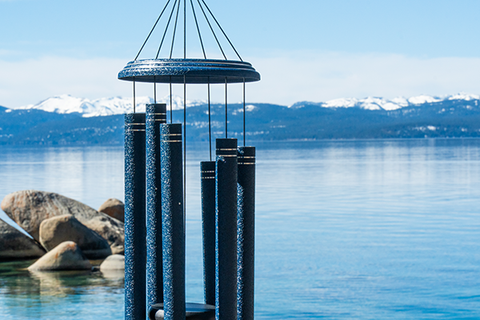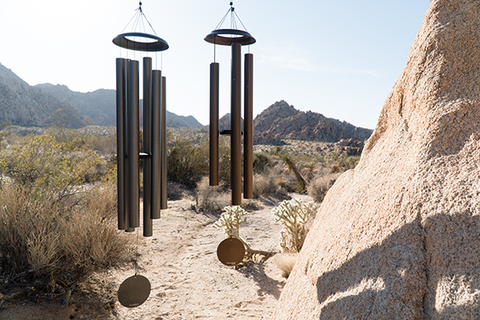
Introduction
Wind chimes have been a beloved decorative and musical feature for centuries. Found in gardens, patios, porches, and homes, they create soothing melodies that enhance the ambiance of any space. But what exactly are wind chimes, and how do they work? In this article, we explore the science, history, and benefits of wind chimes, offering a comprehensive guide to their function and charm.
What Are Wind Chimes?
Wind chimes are hanging musical instruments composed of tubes, rods, bells, or other resonant materials. They are suspended in such a way that they produce sound when moved by the wind. These chimes vary in shape, size, material, and tuning, all of which influence their sound quality.
How Do Wind Chimes Work?
The sound of a wind chime is generated when the wind moves its components. This process involves several key elements:
1. The Tubes or Rods
- The main body of most wind chimes consists of tubes or rods made of materials such as aluminum, bamboo, glass, or wood.
- The length and thickness of these tubes determine the chime’s pitch. Longer tubes create lower tones, while shorter tubes produce higher tones.
2. The Striker
- The striker, also known as the clapper, is a center piece that moves with the wind and strikes the chime tubes to create sound.
- It is usually made of wood, metal, or another resonant material. In the case of a Wind River chimes, many of strikers are made of high-density polymer which elicits a pure, crisp note and warm tone.
3. The Wind Sail
- The wind sail (or catcher) is the piece hanging below the chimes, attached to the striker.
- It captures the wind's force, moving the striker to produce sound.
4. The Suspension System
- The tubes are suspended with string from a top ring or dome, allowing them to swing freely and resonate when struck.
The Science Behind Wind Chime Sounds
Each wind chime is tuned to a specific frequency or scale. The key factors affecting the sound include:
- Material: Metal chimes (such as aluminum) have long-lasting, resonant tones, while bamboo chimes produce softer, organic sounds.
- Tuning: Some high-end wind chimes (like Wind River Chimes) are hand-tuned to specific musical scales.
- Wind strength & placement: A chime’s activity depends on wind conditions. Hanging it in an open, breezy location ensures more continuous movement and sound.
The History and Cultural Significance of Wind Chimes
- Ancient China: Used in temples and homes for good fortune and spiritual harmony.
- Ancient Rome: Chimes and bells were used to ward off evil spirits.
- Feng Shui: In many cultures, wind chimes are believed to attract positive energy and promote relaxation.
Benefits of Wind Chimes
- Creates a soothing atmosphere: The gentle sounds promote relaxation and can help reduce stress.
- Connects you to the rhythm of nature
- Enhances home decor: Available in various styles, wind chimes can complement both outdoor and indoor settings.
- Supports sleep with soothing sounds
- Symbolizes positivity & healing: Often used in memorial gardens or meditation spaces.
- Can be given as a thoughtful gift or memorial
Choosing the Right Wind Chime
If you’re looking for a wind chime, consider factors like:
- Material (aluminum for deep resonance, bamboo for natural tones)
- Size (larger chimes produce deeper sounds)
- Tuning (choose chimes tuned to specific musical scales for harmony)
Frequently Asked Questions About Wind Chimes
Q: Where should I place my wind chime for the best sound?
Hang it in an open area where it can catch the wind without obstruction, such as a porch, garden, or near a breezy window.
Q: Do wind chimes work in low-wind environments?
Yes, but consider lighter chimes or placing them where airflow is maximized—such as near doors, windows, or balconies—to ensure they chime more frequently.
Q: Can wind chimes be used indoors?
Absolutely! Many people hang them near windows or in meditation spaces. A gentle breeze or airflow from fans can activate them indoors.
Q: What materials create the longest-lasting wind chimes?
Powder-coated aluminum is the most durable, offering long-lasting resonance and resistance to weather. Bamboo and wood provide natural tones but require more care.
Conclusion
Wind chimes are more than just decorative pieces; they are harmonious instruments that bring tranquility and joy. Whether used for relaxation, spiritual purposes, or simply as an artistic addition to your home, understanding how wind chimes work allows you to appreciate their timeless beauty even more.



